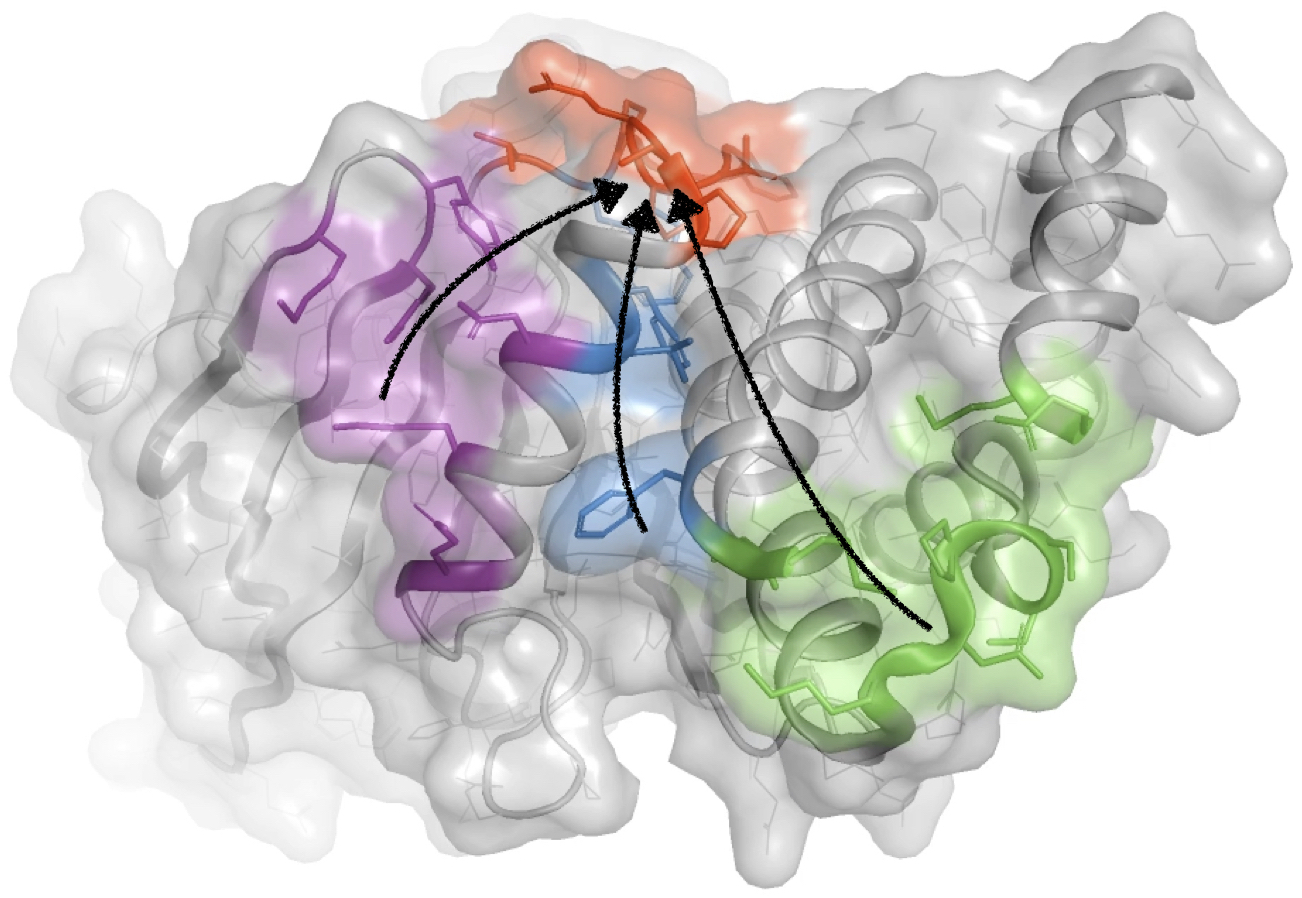What are the "secret lives" of protein structures?
For protein molecules, structure is critical to function.
But proteins don't like to sit still!
The alternative conformations of proteins,
which are often overlooked by traditional structural biology methods,
can provide key insights into biological processes.
We are exploring new approaches in X-ray crystallography for revealing
the hidden conformational ensembles of proteins
and incorporating them into new types of three-dimensional models.
Our goal is to develop new methods to
characterize excursions from the average structure in proteins
and to explore the implications of those excursions for biology.
How are allosteric proteins "wired"?
Proteins have the inherent capacity to transmit signals through their three-dimensional structures.
This phenomenon, called allostery, allows for exquisite control of protein function
to regulate a wide range of cellular processes.
Although allostery is thought to be quite prevalent among proteins,
our understanding of how it works at the basic atomic level remains limited.
In the Keedy Lab, we use new methods in experimental and computational structural biology
to elucidate the role of transitions between low-occupancy conformations in allostery,
and test mechanistic predictions using targeted perturbations such as mutations
and allosteric small-molecule activators or inhibitors.
Overall, we seek to understand how
a complex hierarchy of mechanical coupling between different regions of a protein structure
gives rise to allosteric communication.
Can we elucidate the design principles of modular signaling proteins?
Protein tyrosine phosphatases play key roles in signaling pathways within human cells.
PTPs have distinct substrate specificities, cellular roles, and disease phenotypes,
including diabetes, cancers, arthritis, and Alzheimer’s disease.
However, they all share a structurally conserved catalytic domain.
How has Nature co-opted a single protein domain to achieve such functional diversity?
We hypothesize that in different PTPs,
sequence differences "rewire" the shared cataytic domain
to receive inputs from highly diverse regulatory domains.
Our work explores how similar proteins can be regulated in diverse ways,
even when the average structure remains static,
by emphasizing the key role played by energetically coupled low-occupancy states.
We aim to dissect the component-based architecture of PTPs
by characterizing the conformational ensembles of a menagerie of diverse PTPs
and using computational structure-based protein design methods to explore their modularity.




